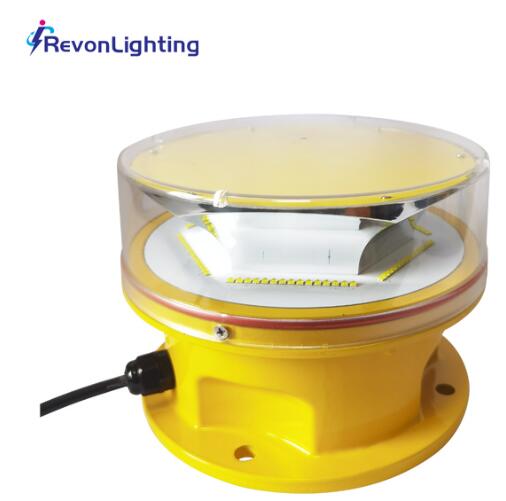Posted: 2024-06-05
Aeronautical obstruction lights play a vital role in aviation safety by alerting pilots to the presence of tall structures or obstacles during flight. These lights are installed on structures such as towers, buildings, chimneys, and wind turbines to ensure their visibility to pilots. In this article, we will explore the key features and benefits of aeronautical obstruction lights, as well as their impact on aviation safety.
Key Features of Aeronautical Obstruction Lights
Aeronautical obstruction lights are designed to be highly visible, even in adverse weather conditions. They typically use high-intensity LED lights that emit a bright, steady light. The lights are available in different colors, such as red or white, depending on the specific application and regulatory requirements. Additionally, these lights are equipped with light sensors that automatically activate the lights during low-light conditions, such as at dusk or during heavy fog.
Benefits of Aeronautical Obstruction Lights
Enhanced Visibility: Aeronautical obstruction lights provide clear visual warning to pilots, helping them identify potential obstacles in their flight path. This is particularly important during night-time or low-visibility conditions when pilots heavily rely on visual cues.
Compliance with Regulations: Aeronautical obstruction lights meet the regulatory requirements set by aviation authorities such as the Federal Aviation Administration (FAA). These regulations specify the minimum intensity, color, and flashing characteristics of the lights, ensuring consistent and standardized warning signals across different installations.
Energy Efficiency: Aeronautical obstruction lights often utilize energy-efficient LED technology, reducing power consumption and reliance on traditional energy sources. This not only makes them environmentally friendly but also cost-effective in the long run.
Easy Installation: Aeronautical obstruction lights can be easily installed on existing structures without the need for extensive wiring or electrical connections. They can be mounted on towers, buildings, chimneys, or wind turbines, saving time and resources.
| 22 | Aeronautical Obstruction Lights |
| 24 | 44 |
| 34 | 45 |
Low Maintenance: These lights have a long lifespan and require minimal maintenance. Once installed, they operate autonomously, with the ability to self-diagnose and report any faults. Routine checks and occasional maintenance ensure proper functioning.
Impact on Aviation Safety
The installation of aeronautical obstruction lights has significantly improved aviation safety. These lights play a critical role in preventing collisions between aircraft and structures, such as towers or buildings. By providing a clear visual warning, pilots can effectively avoid obstacles and maintain a safe flight path. Moreover, these lights contribute to the overall safety of airspace by minimizing the risk of accidents and improving situational awareness for pilots.

Conclusion
Aeronautical obstruction lights are a vital component of aviation safety, providing visual warning to pilots about potential obstacles during flight. With their enhanced visibility, compliance with regulations, energy efficiency, easy installation, and low maintenance requirements, these lights offer effective and sustainable solutions to enhance aviation safety. By ensuring improved visibility and alerting pilots to potential hazards, aeronautical obstruction lights have significantly contributed to safer skies for all.